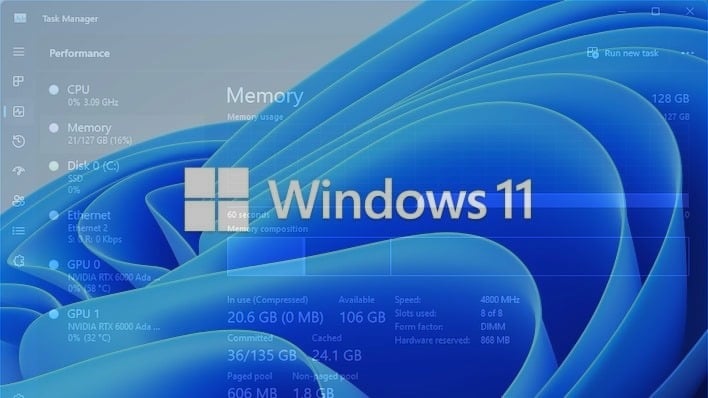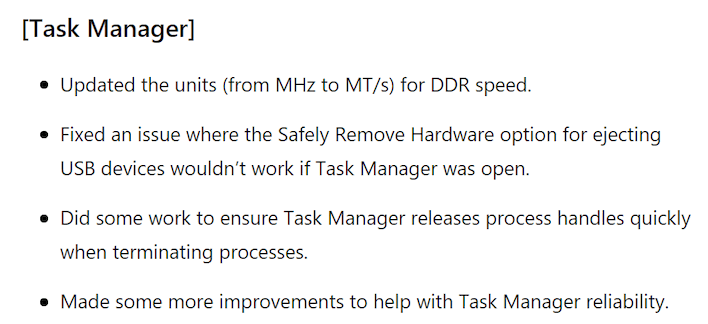Windows Task Manager Will Soon Replace MHz With MT/s For RAM Speed

There are a number of fixes and changes coming to the Windows Task Manager in this update. Among them are reliability improvements, keyboard navigation adjustments, process termination fixes, and a patch for a strange issue where it was impossible to unmount USB devices while Task Manager was open.

Arguably the least important change to Task Manager gets front and center billing in the list of patch notes, though: Microsoft is changing the memory speed readout in Task Manager to use "MT/s" instead of "MHz." Strictly speaking, this change does make it more accurate; the speed reported is the data transfer speed, not the clock rate, so marking it as the number of transfers per second is correct.
If you're confused on this, remember that basically all computer memory at this point is "DDR", or Double Data Rate. This means that it transmits data along both the rising and falling edge of the clock signal. In essence, the data rate is "double" that of the clock rate. It's not really wrong to describe the data rate in "Hertz" because you're still describing the number of times something happens per second, but given the overlap in terminology with the clock rate, most people agree that it's better to use a different term to avoid confusion.

The "transfers per second" nomenclature isn't universally-accepted, though. The memory vendors almost exclusively describe the per-pin data rate (the rate we're talking about here) in terms of bits per second. This is exactly the same measurement, but instead of saying "4800 MT/s", you would say "4.8 Gbps". Again, it means exactly the same thing. However, some people dislike this usage in the context of a system's memory interface because it can be easy to confuse the per-pin transfer rate with the actual transfer rate of the memory bus.
When you're talking about your PC's memory bus, it almost assuredly has a 128-bit memory interface. Your "4.8 Gbps" memory is actually transferring data at a theoretical peak of 614,400 Gbps, or 76.8 GB/sec. It's for this reason that the "MT/s" name became popular—it's much more difficult to confuse it with another measurement, so it's clear at a glance that you're talking about the data rate of the memory.
So while we applaud this change from Microsoft, we do have to admit that there are probably bigger fish to fry even within the context of the Task Manager. Improved metrics for CPU and GPU utilization would be a good place to start.

